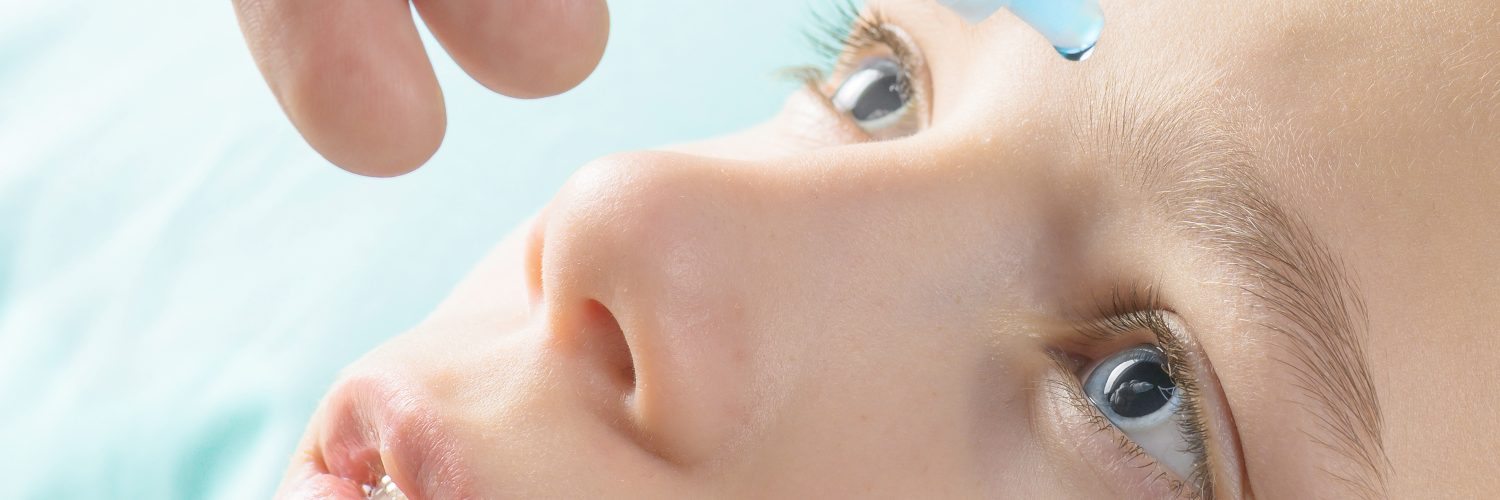
Cataracts in Children
Most people associate cataracts as an eye condition that develops as we age. However, cataracts can also affect babies and children forming either during pregnancy, after birth or during childhood.
What is a cataract?
In order for you to be able to see, light passes through the clear lens in your eye. The purpose of this lens, which is situated behind the iris, is to focus the light onto the retina at the back of your eye so your brain and your eye can work together to process information that allows you to see. A cataract is formed when the normal proteins and fibres in the lens begin to break down and form into clumps and cloud the lens blocking the light from passing through it. Over time your vision will become blurred. Cataracts can occur in one or both of your eyes.
What types of cataracts can occur in babies and children?
There are two ways that cataracts in children are known by:
- Congenital cataracts. These cataracts are caused when the lens did not form correctly during pregnancy. They will likely be present at birth or develop during early childhood. Congenital cataracts may be caused by a chromosomal problem, such as Downs Syndrome, if there is a family history, as a result of an infection during pregnancy or soon after birth, or if the baby is born prematurely.
- Acquired cataracts. Cataracts that develop later on in childhood can be caused by your child experiencing an eye injury, through complications from other eye diseases such as glaucoma, as a consequence of other illnesses such as diabetes and rheumatoid arthritis, radiation treatment or use of steroids.
Sometimes cataracts in children develop without any known cause.
How can you know if your child has cataracts?
Your child’s eyes are first examined as a newborn where they are checked for cataracts and other eye conditions. They will continue to have vision tests during their regular post-natal and childhood check-ups. It can be hard for children to explain to their parents if they are experiencing problems with their vision, as they may not know that they are. Whilst you can’t always see cataracts, there are some signs you can keep an eye out for:
- the pupil looks white when a bright light is shone in the eye
- eyes that are misaligned and don’t look in the same direction
- involuntary eye movements that can’t be controlled
- sensitivity to bright lights and glare
- blurry or cloudy vision that is causing trouble seeing. You may notice your child holding things close to their eyes so they can see them.
- they may see a circle of light, or halo, around an object
- colours may not seem as bright.
How are cataracts in children treated?
The method of treatment for your child will depend on their age and the size and severity of the cataract and its affect on their vision. If the cataract is small and is not interfering with your child’s vision, your ophthalmologist may choose monitor it over time without any need for treatment. A larger cataract, however, that impedes your child’s vision will need to be surgically removed and replaced with an artificial lens, known as an intraocular lens. Because the brain develops rapidly during infancy, young babies with congenital cataracts that affect their vision will need to have them removed as soon as possible to avoid any long-term effects. Generally, for children under 12 months old, a replacement lens will not be implanted under the child is older. This surgery can be done as early as eight weeks old.
What happens during and after surgery?
The procedure is usually a day surgery, but may require an overnight stay. Your child will be given a general anaesthetic, so they will not be awake or be able to feel anything during the operation. Your eye surgeon will make a small incision in the cornea and using special tools break up the damaged lens and remove it.
When your child wakes up from the surgery, they will have a dressing and shield over their eye to prevent them rubbing it and to protect it from infection. Your child will most likely be able to go home that same day. The dressing is usually removed the next day. Very young children recover quickly and can be back to normal in about a day. Older children, however, may experience some discomfort for a few days with eyes that feel itchy and scratchy. Your eye doctor will provide you with some eye drops to take home for your child. If your child only has one eye affected, in order to strengthen the eye that was operated on, they may be required to wear an eye patch on the other eye.
Regular follow up appointments will be needed as your child grows older to monitor their visual development and further surgery may required for placement of an intraocular lens. Most children and babies will need to have eyeglasses or contact lenses following surgery, so their prescription will need to be monitored as they grow. Cataracts that are treated promptly can help save your child’s vision. As long as you stick to your child’s treatment plan, treatment is usually highly successful.
If you think that your child is experiencing symptoms of cataracts, or are concerned in any way about your child’s vision, it is important that you arrange an eye examination with your optometrist as soon as possible so there is no delay in starting any necessary treatment that could affect your child’s long term vision.

